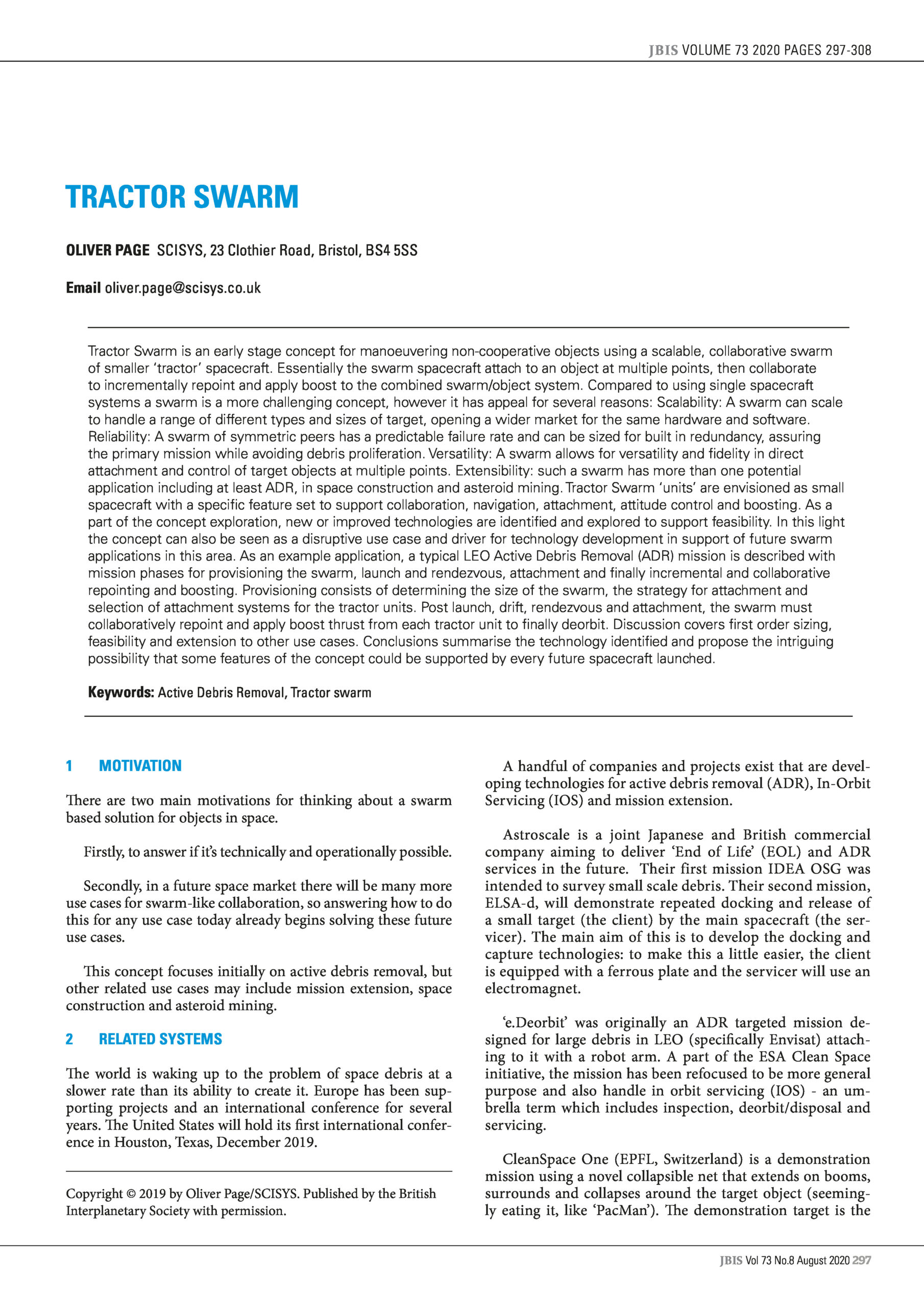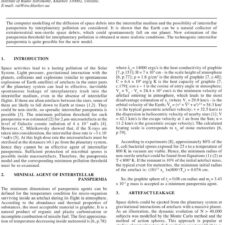Tractor Swarm
£5.00
O. Page (2020), JBIS, 73, pp.297-308
Refcode: 2020.73.297
Keywords: Active Debris Removal, Tractor swarm
Abstract:
Tractor Swarm is an early stage concept for manoeuvering non-cooperative objects using a scalable, collaborative swarm of smaller ‘tractor’ spacecraft. Essentially the swarm spacecraft attach to an object at multiple points, then collaborate to incrementally repoint and apply boost to the combined swarm/object system. Compared to using single spacecraft systems a swarm is a more challenging concept, however it has appeal for several reasons: Scalability: A swarm can scale to handle a range of different types and sizes of target, opening a wider market for the same hardware and software. Reliability: A swarm of symmetric peers has a predictable failure rate and can be sized for built in redundancy, assuring the primary mission while avoiding debris proliferation. Versatility: A swarm allows for versatility and fidelity in direct attachment and control of target objects at multiple points. Extensibility: such a swarm has more than one potential application including at least ADR, in space construction and asteroid mining. Tractor Swarm ‘units’ are envisioned as small spacecraft with a specific feature set to support collaboration, navigation, attachment, attitude control and boosting. As a part of the concept exploration, new or improved technologies are identified and explored to support feasibility. In this light the concept can also be seen as a disruptive use case and driver for technology development in support of future swarm applications in this area. As an example application, a typical LEO Active Debris Removal (ADR) mission is described with mission phases for provisioning the swarm, launch and rendezvous, attachment and finally incremental and collaborative repointing and boosting. Provisioning consists of determining the size of the swarm, the strategy for attachment and selection of attachment systems for the tractor units. Post launch, drift, rendezvous and attachment, the swarm must collaboratively repoint and apply boost thrust from each tractor unit to finally deorbit. Discussion covers first order sizing, feasibility and extension to other use cases. Conclusions summarise the technology identified and propose the intriguing possibility that some features of the concept could be supported by every future spacecraft launched.





